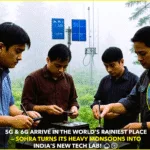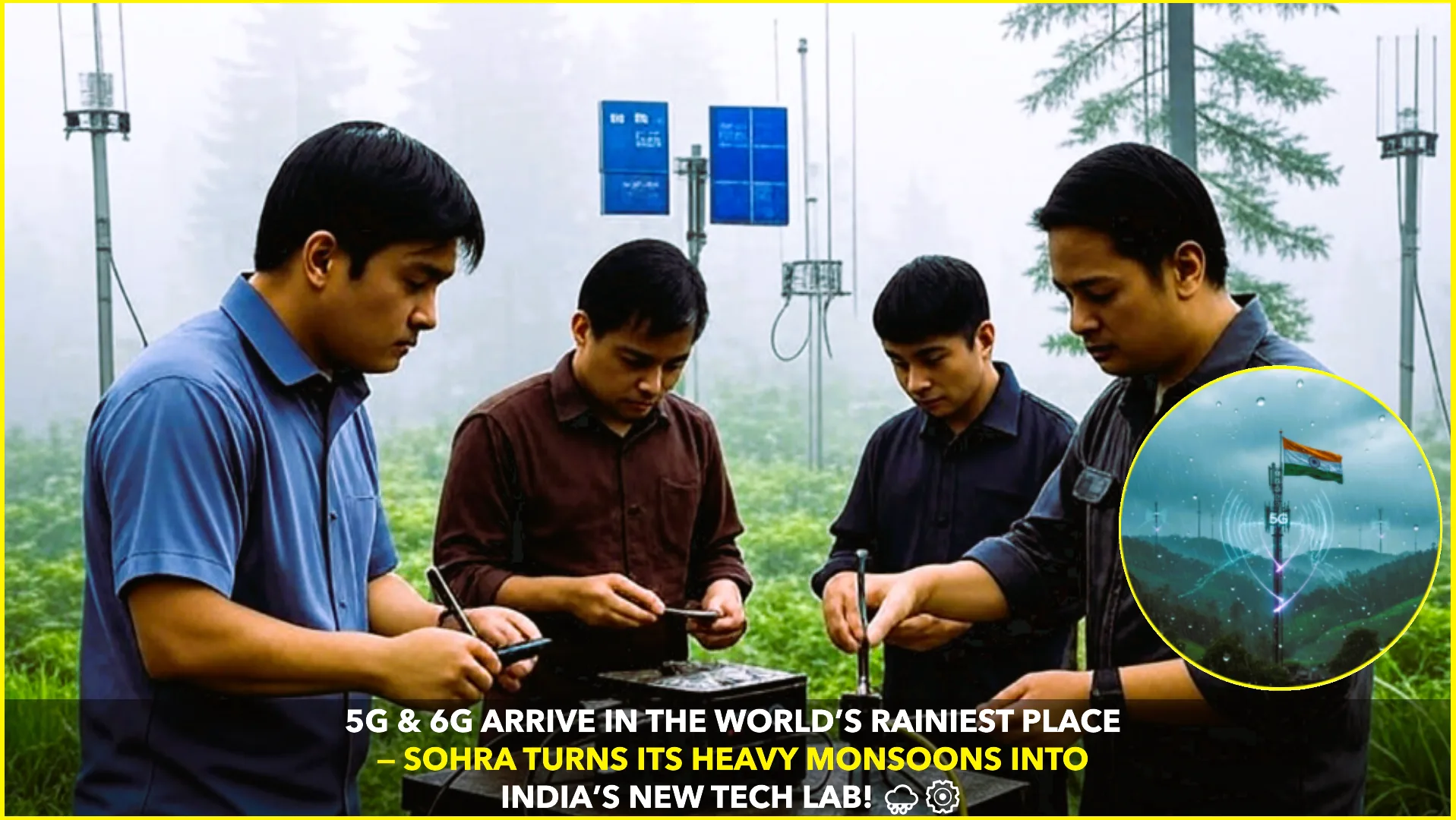Sohra, Meghalaya — In a remarkable step toward blending nature with next-generation technology, researchers from the National Institute of Technology (NIT) Meghalaya and the North Eastern Space Applications Centre (NESAC) are developing 5G and 6G communication systems designed to perform even under the world’s heaviest rainfall. Their groundbreaking experiments in Sohra (Cherrapunji) — famous as the wettest place on Earth — could revolutionize how high-speed networks operate in extreme weather zones.
(Source: The Print)
Harnessing Rain to Strengthen Signals
Heavy rainfall is one of the biggest natural obstacles for high-frequency radio waves, especially those used in 5G and 6G millimeter-wave bands. Raindrops can absorb and scatter these signals, weakening network strength. But instead of avoiding the challenge, the scientists in Sohra are turning the rain itself into a learning tool.
According to the researchers, their plan involves installing antennas, rain gauges, and sensors across the East Khasi Hills district to collect real-time data on how varying rainfall intensities affect network quality. This data will help design adaptive algorithms and hardware that can automatically compensate for disruptions caused by rain.
(Source: India Today NE)
Dr. Anup Dandapat, Dean (Academic Affairs) at NIT Meghalaya, explained that Sohra’s environment is an ideal “natural laboratory.” The team aims to develop weather-resilient communication systems capable of maintaining stable signals even during heavy monsoons — a breakthrough that could later benefit hilly and flood-prone regions across India.
India’s Technological Push
This initiative reflects India’s larger mission of technological self-reliance, aligning with the national goals of “Digital India” and “Atmanirbhar Bharat.” The partnership between NIT Meghalaya and NESAC, a joint center under ISRO and the Department of Space, shows how India’s northeastern states are becoming active players in cutting-edge research.
(Source: Telecom Economic Times)
Officials say that once successful, this model can be replicated across the Himalayas, Western Ghats, and even international regions that struggle with similar weather-related signal issues. This will make India one of the few countries capable of designing climate-adaptable 6G frameworks.
Beyond Connectivity: Sohra’s First Integrated Chip
Adding another feather to its cap, NIT Meghalaya recently designed and produced the state’s first integrated circuit (IC) — a small but powerful chip for use in agriculture technology. Created under the Ministry of Electronics and Information Technology’s Special Manpower Development Program, the chip uses a 180-nanometre semiconductor process developed at the Semiconductor Laboratory (SCL), Chandigarh.
(Source: India Today NE – Chip Report)
This microchip, known as a Finite State Machine (FSM), is designed for smart irrigation systems and soil-moisture monitoring, helping farmers automate water usage and improve yields. It marks a major milestone in India’s domestic semiconductor design journey and reflects how small research institutions are now contributing to national priorities in chip manufacturing.
At the SEMICON India 2025 event, this achievement was showcased to Prime Minister Narendra Modi as an example of innovation emerging from India’s northeast.
(Source: Devdiscourse)
Bridging Nature and Technology
Together, the 5G/6G rain-resilient project and the agricultural IC development symbolize the transformation of Sohra from a rain-drenched hill town into a hub for frontier research. By treating nature’s toughest conditions as opportunities for innovation, NIT Meghalaya and NESAC are pushing the limits of what Indian science can achieve.
(Source: Assam Ink)
Their research not only strengthens India’s telecom future but also promises to make life better for farmers and rural communities. From improving network reliability in storms to enabling smart farming through indigenous chips, Sohra is proving that even the rainiest place on Earth can shine as a beacon of innovation.
A New Chapter for Sohra
Sohra’s story is no longer just about breaking rainfall records — it’s about breaking technological barriers. From harnessing raindrops to power stronger 5G and 6G networks to designing chips that make farming smarter, the scientists at NIT Meghalaya and NESAC are proving that innovation can thrive even in the most unpredictable weather.
Their work is a reminder that every challenge — even relentless rain — can become a source of discovery. Sohra, once known only for its downpours, is now emerging as a symbol of India’s resilience, creativity, and self-reliance in technology.










